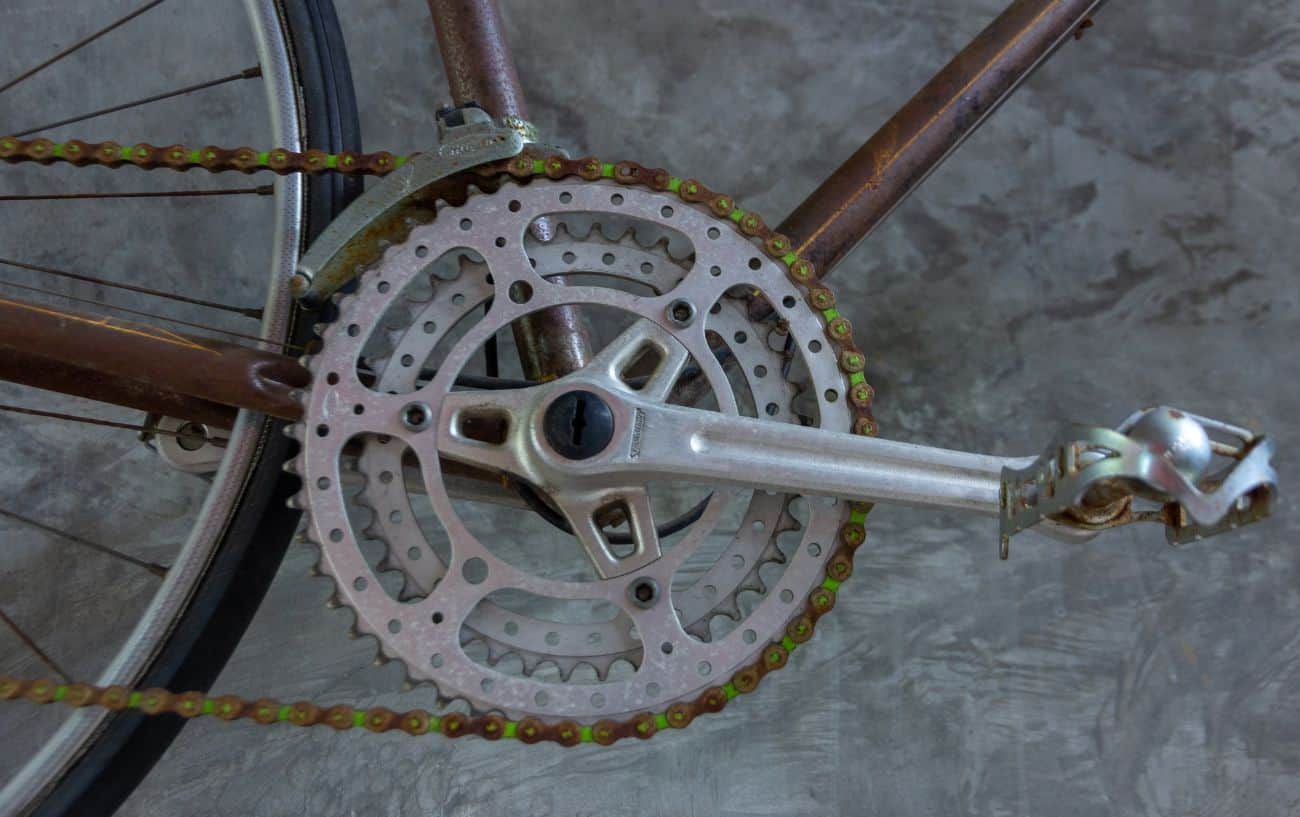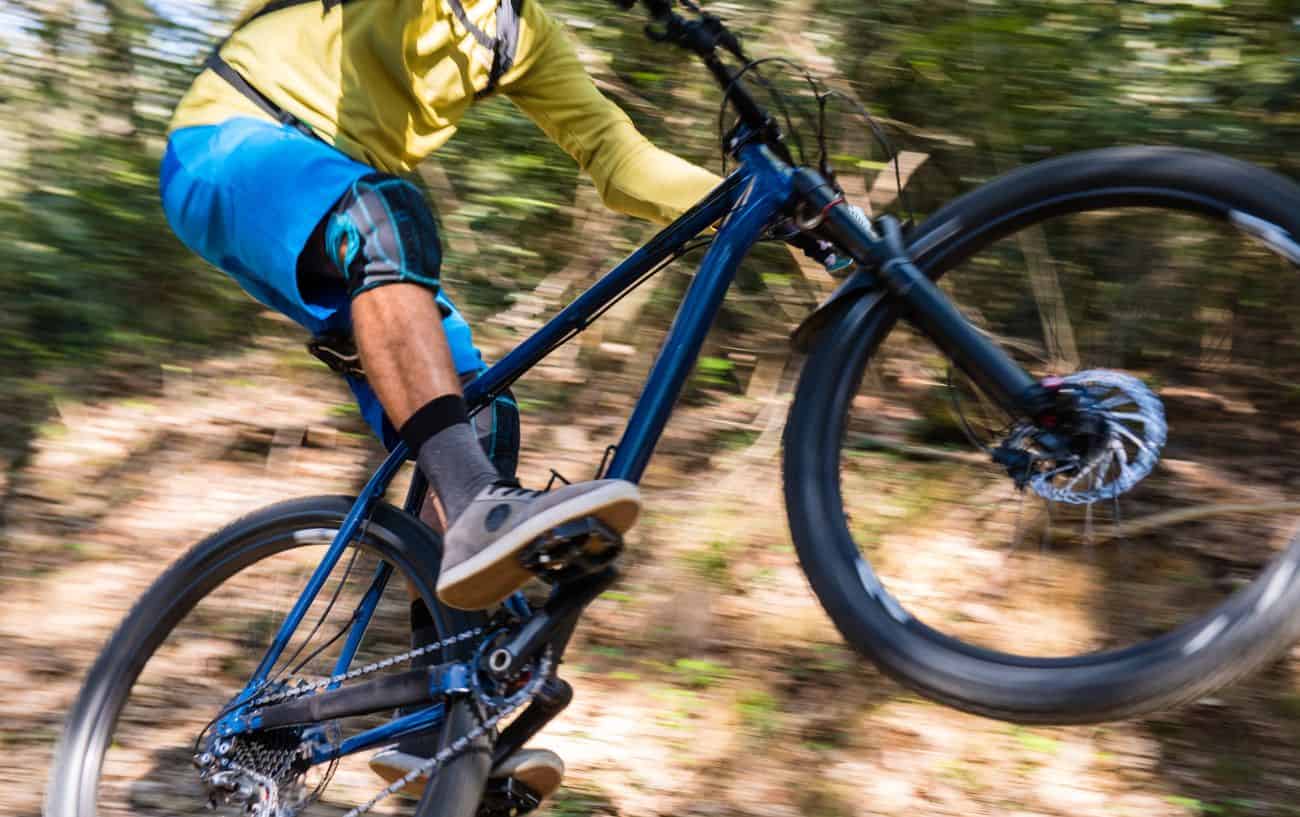It can take some time to grips with all the mechanisms that help your bike run smoothly – not least the bicycle chainrings.
The bicycle is a machine with so many parts that many people never even learn the technical terms, preferring instead to just point to the area where something has gone wrong.
But if you’re looking to take your cycling to the next level, getting to know your bike parts in more detail is a sure-fire way to increase your confidence each time you get in the saddle.
Bike chainrings are a vital component in making the bike move, and the right – or wrong – chainrings can have a massive impact on your cycling experience. That’s why it’s important to understand the choices that are available to you, and more broadly, to grasp what it is that chainrings actually do.
In this article, we’ll be giving you a comprehensive guide to bicycle chainrings. We’ll be discussing these key topics:
- What Are Bicycle Chainrings?
- What Different Types Of Chainring Are There?
- What Is Bolt Circle Diameter (BCD)?
- Can You Customize Your Chainring Set-Up?
- Getting To Know Your Bicycle
Read on for everything you need to know about this crucial bit of kit!

What Are Bicycle Chainrings?
The chainrings are the circular, toothed rings connected to your cranks, responsible for pulling the chain round. They’re bolted to your crankset, with the pedals attached at the end of the crank arms.
On geared bikes, chainrings can be thought of as the front set of gears. The rear set of gears is known as the cassette.
The main job of the chainring is to transmit the energy you create by turning the pedals to the rear wheel, via the chain.
Your bike’s gearing and overall performance can be altered substantially by the size of your chainring. Bigger chainrings mean a higher (harder to push) gear, while smaller rings mean a lower (easier to push) gear.
Most geared bikes have multiple chainrings, allowing you to change the size of the chainring you’re using – and therefore the gear ratio – as you ride. By utilizing gear ratios for different outputs on different terrain, bicycle chainrings help optimize your power.
What Different Types Of Chainring Are There?
Different bikes have different chainrings, and different chainrings do different things.

Road Bike Chainrings
Typically, road bike chainrings are made out of aluminum, and are on the larger side. They’ll often have a five-arm spider (the interface between the crank arms and the chainrings) as opposed to the four-arm MTB standard, which means five bolts as opposed to four.
The most common types of road chainsets are the standard double, the compact double, and the triple.
The standard double is the traditional chainset type, favored by racers and cyclists with the legs to push big gears over flatter areas. The most common gearing for a standard double is 53t-39t (53 teeth on the large chainring, 39 teeth on the small chainring) offering big enough gears for competition usage.
Next up is the compact double, which gives the same number of gears but uses smaller chainrings to offer lower gearing options for leisure and sportive riding, and to help less competitive cyclists up steep hills. A typical compact setup is 50t-34t.
Last but not least, a triple chainring set-up tends to be found on some entry-level and touring bikes via three rings, often with profiles around 52t-42t-32t. These help beginners and cyclists with heavy loads up hills by offering a smaller ring than would be practical with a double chainring setup.

Mountain Bike Chainrings
The more money you spend on a mountain bike chainring, the lighter and better it will generally be. That being said, they usually don’t hit the wallet too hard.
Most mountain bikes have moved away from having multiple front chainrings, instead opting for a single medium-sized single ring. This helps save weight while also getting rid of niggly moving parts.
Known as 1x drivetrains, these single-chainring setups are normally paired with wide-range cassettes to make up for the loss of gearing options from sacrificing an additional chainring.
Another development that has allowed chainrings to aid mountain bike performance is the staggered – or “narrow wide” – chainring. On a staggered chainring, the teeth alternate between wide and narrow profiles to match the wider and narrower spaces between the alternating links of a bike chain.
This mirroring of the chain’s staggered pattern allows the chain to run more smoothly as it no longer bounces from left to right, helping with chain retention (i.e. making sure the chain doesn’t fall off while you’re cycling).
Having a staggered chain ring set-up can give a real boost to an aging bike drivetrain.

BMX Chainrings
While BMX bikes don’t have multiple gears, gear ratio and chainring set-ups remain super important.
BMX bikes generally utilize a single chainring (also often referred to as a sprocket, chainwheel, or front cog) up front, mounted directly onto the crank’s spindle and arm. This means there’s no need for a spider.
There haven’t been too many major developments in BMX chainring technology in recent years. The main thing to note is that they’ve been gradually reducing in size, in order to allow more ground clearance.

What Is Bolt Circle Diameter (BCD)?
Another area you need to know about is the Bolt Circle Diameter (often referred to as BCD) of your chainrings. This is useful to know for anyone looking to replace a chainring with one of identical size.
Bolt Circle Diameter (BCD) is the diameter of the circle that goes through the center of all of the bolts on your chainring. This dimension is usually measured in millimeters.
Sometimes, the BCD is printed, stamped, or engraved on the chainring, although other times you’ll have to consult the manufacturers’ website to find out the BCD of your bicycle chainring (you can also work out BCD yourself, although it involves some complex maths).

Can You Customize Your Chainring Set-Up?
The standard double and the compact double are the two most popular forms of chainring set-up, with the triple another option that’s a favorite amongst plenty of riders.
But what if you want to change the chainring on your bike?
You may feel as though a new chainring could seriously improve your cycling experience. Or maybe your current chainring is a bit worn out, and you just fancy trying something a little different.
There’s good news and bad news: it is possible to personalize your bicycle chainrings if you like; however, it’s crucial that the bolt patterns fit, and that the chain and derailleur will accommodate it.
Crank arms have specific bolt circle diameters that must be matched up with the corresponding chainring BCD. For example, standard double cranks tend to have a 130mm BCD, and won’t work with anything smaller than a 38 small ring.
That being said, don’t be afraid to experiment; if your chosen chainring combination won’t work, there’s often an alternative to it that can do a good job.
Changing bicycle chainrings is one of the easiest ways to change the performance, comfort, or efficiency of your bike, so as long as you get the basics right, there’s no harm in looking into it.
One relatively recent development in bike technology that’s worth noting is that manufacturers have also begun to utilize oval chainrings to maximize the natural motion of the legs.
The effectiveness of these is still up for debate, but they’ve convinced Tour de France winners such as Chris Froome and Bradley Wiggins – so they must be doing something right!

Getting To Know Your Bicycle
Having a good understanding of how your bike works is vital. That’s true whether you want to become an expert on all things cycling, or you’re just desperate to not embarrass yourself when you need to explain a problem to a mechanic!
And getting to grips with your bike chainring is a key part of this mission for bike part knowledge.
Learning how your chainring operates and understanding the differences between different types of chainsets will make you a more confident cyclist with a greater ability to make alterations when desired or needed.
Before we go, let’s quickly recap the three main types of bike chainring, just so you’re clear:
- Double Chainrings are the classic variety, usually coming with 53 teeth on the big ring and 39 teeth on the small ring
- Compact-Double Chainrings have a more compact gear ratio, with a typical set-up of 50-teeth for the large ring and 34-teeth for the small ring
- The Triple Chainring generally has the benefit of lower gearing for more efficient climbing, with standard gearing at around 50-40-30.
This basic knowledge is crucial if you’re wondering how your chainring impacts your performance.



